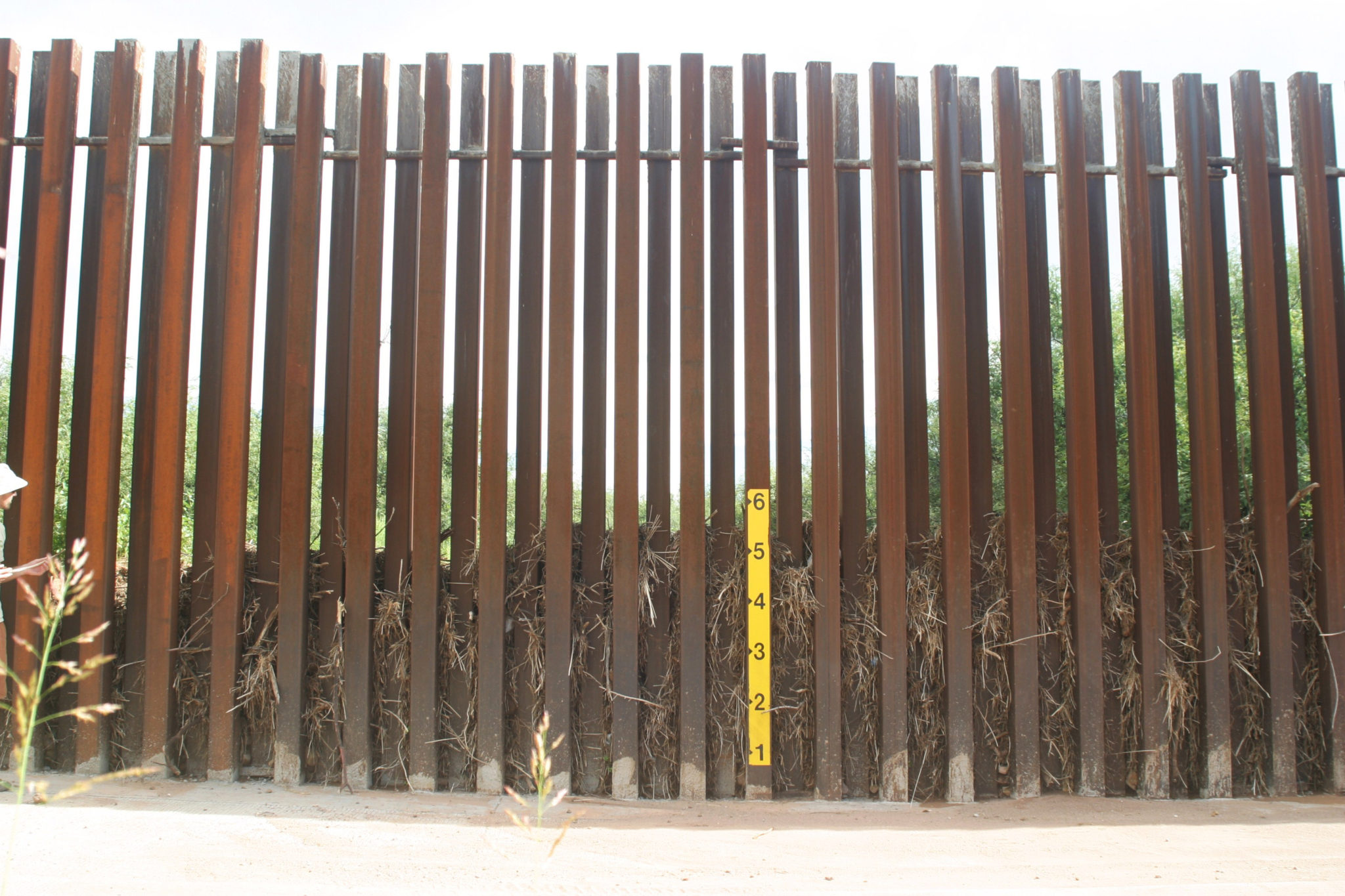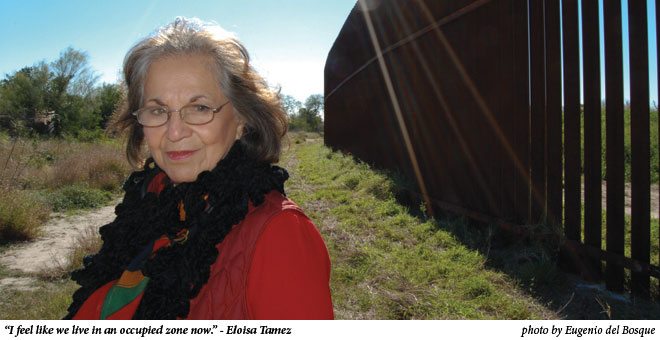DHS Pushes for Border Fence in Floodplain
The Department of Homeland Security is pushing for 14 miles of border wall to be built through Hidalgo and Starr counties even though it could flood U.S. towns and violate a treaty with Mexico.
In 2006, Congress passed its Secure Fence Act mandating the construction of 700 miles of fence along the U.S.-Mexico border. Hundreds of Texas landowners were sued and their land seized by the Department of Homeland Security.
Residents in the communities of Roma, Los Ebanos and Rio Grande City got a reprieve from construction, however, because of “engineering and hydraulic problems,” according to U.S. Congressman Henry Cuellar, who said in a 2008 McAllen Monitor story: “Realistically and practically, they’re basically passing this decision (on the border fence) to the next administration. Certainly, for my constituents, we have a victory.”
The “engineering and hydraulic problems” the Congressman alluded to was the fact that the 18-foot impermeable fence would have to be constructed in a floodplain to fulfill the congressional mandate. Building a fence that costs approximately $4.5 million a mile in a floodplain sounds like a joke. And it would be if taxpayers weren’t paying for it, and if it weren’t common practice for the Department of Homeland Security to build fences in washes, floodplains and riverbeds along the border.
Recently, 40 feet of steel border fence washed away during a flash flood in the Arizona desert. This was after the U.S. Border Patrol had been warned by Arizona park officials that the fence would be washed away during the summer monsoon season. Despite their warnings, Border Patrol issued an environmental assessment saying that the fence “would not impede the natural flow of water or cause flooding.”
The destroyed fence constructed by Kiewit Western Co. cost taxpayers $21.3 million to build, according to the Arizona Daily Star.
When it comes to the border wall, the Department of Homeland Security has a history of avoiding scientific data and environmental impacts when it stands in the way of constructing border fence.
The 14-mile section of border fence through Roma, Los Ebanos and Rio Grande City is no different. Several hydrological studies conducted by a private firm Baker Engineering hired by U.S. Customs and Border Protection have shown that an 18-foot impermeable fence in a floodplain will either push floodwaters into Mexico – violating a 1970 international treaty or it will worsen flooding on the U.S. side of the border.
Despite the findings, government documents reveal that U.S. Customs and Border Protection (the DHS agency) which oversees construction of the fence is pushing the International Boundary and Water Commission (IBWC), which has jurisdiction over the Rio Grande to sign off on building the 14-mile fence in the floodplain.
In a February 2010 letter, David Aguilar, CBP’s deputy commissioner applied pressure to IBWC’s Commissioner Ed Drusina to approve the project despite his agency and Mexico’s opposition to constructing the fence.
“Because the Mexican Section of the IBWC has opposed all proposed border fencing within the Rio Grande and Colorado Rivers’ floodplains since the enactment of the Secure Fence Act (regardless of the expected floodplain impacts), Commissioner Ruth was not optimistic that the Mexican Commissioner would agree to support the proposed fencing and indicated during the January 6th meeting that an unilateral decision would likely be needed to construct the fence segments. We understand that the Mexican Commissioner did in fact recently inform Commissioner Ruth that Mexico would oppose the fence segments if formally submitted to them for consideration.
For the numerous reasons stated above, we respectfully request that the USIBWC and Department of State reconsider your position and approve a unilateral decision to allow us to proceed with the design and construction of the O-1, O-2 and O-3 fence segments.”
The IBWC was not persuaded, however. “Until other analysis can demonstrate that the fence will not deflect flows or increase water elevation above our criteria we must again deny our support for the proposed alignment of the fence…” wrote Commissioner Drusina to Alan Bersin, commissioner of Customs and Border Protection.
Bersin wrote back asking for a meeting with high level officials from the State Department, the IBWC and USCBP to talk about “challenges” to building the border fence segments “which are urgently needed to secure this area of the border.” One challenge Bersin listed was “Mexico’s recent opposition to border fencing regardless of hydraulic modeling results.”
IBWC met with U.S. Customs and Border Protection two more times. The end result was that CBP paid Baker Engineering to create yet another flood model, to try and prove that a wall in a floodplain was a good idea, says border resident Scott Nicol, a Sierra Club volunteer and author of the No Border Wall blog. Nicol learned of this during a conference call with IBWC officials. He also learned that the Baker Engineering report will be turned over to IBWC any day. If the agency signs off on it CBP could begin construction of the fence. The Department of Homeland Security has already seized several properties in these cities and is making an effort to speed up lawsuit settlements with landowners.
Nicol started looking into the new fence construction after he saw a brief mention of it in a government report last spring. “I thought they’d given up,” he says. “But apparently they were really pushing to get it done.”
Nicol worries that the new fence segments will flood the U.S. communities. He’s examined the various Baker Engineering flood models and is especially concerned about the Los Ebanos wall.
“It could have serious implications for local residents,” he says. “There at the split point the river takes a sharp southward bend, while the wall runs due east. There could conceivably be a dry space between the community, which would have water sent towards it by the wall, and the river to its south (near the hand-drawn ferry). Even worse, the wall abruptly turns to the north at the end of town. This could bottle up waters that have been split off from the river, trapping flood water in the community.”
The question for these border communities now is will the IBWC be steamrollered by the Department of Homeland Security? It’s happened before and it could happen again. And if it does, once again U.S. taxpayers and border communities will pay the price.


